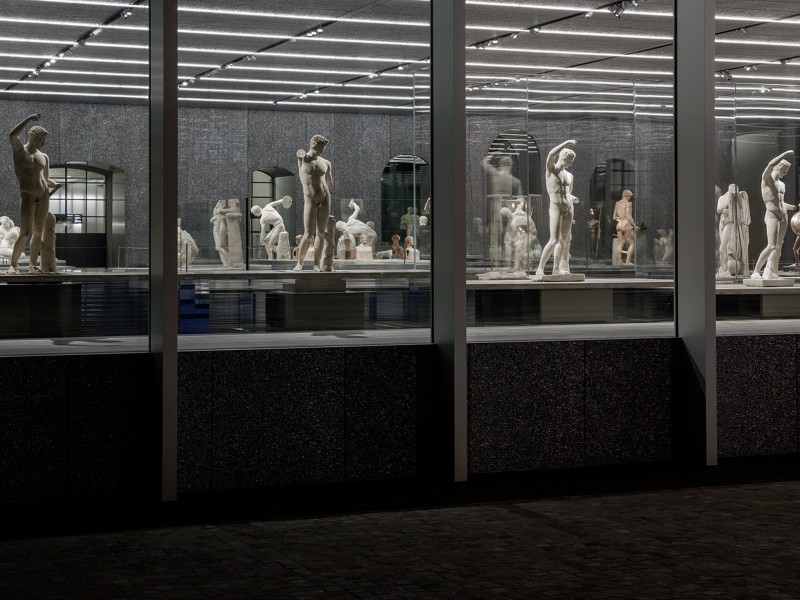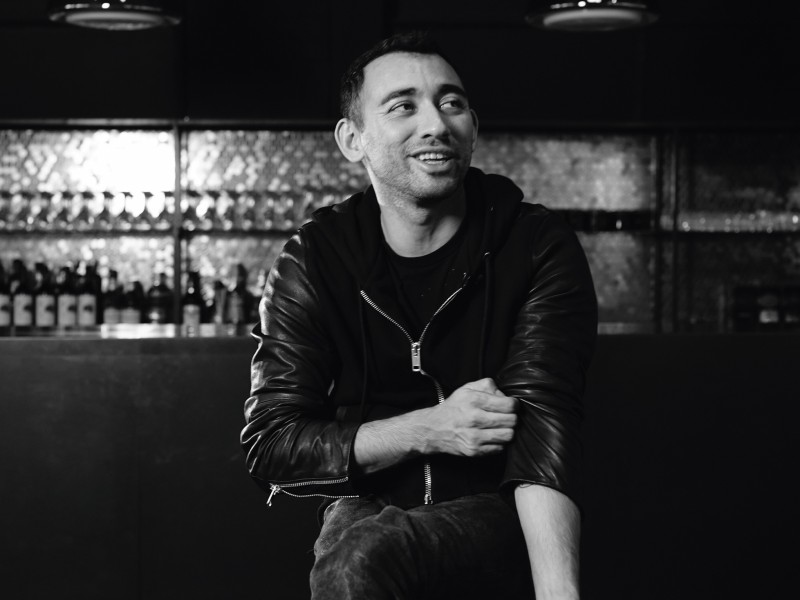Punks, patricians, and anybody else straining toward their chic all adorn themselves for the same reason: an audacious display of making-do with the one body they have been assigned and confined in. Jordan Askill is part of an ascendant school of new jewellery designers whose small glories—sugar spun heart rings, for example—and swirling friezes of horses, birds and panthers have stymied our idea of what art can do, and what it can do without. In November 2015, Askill won the British Fashion Award for Emerging Accessory Designer. When we spoke, he was preparing for a flight from New York to Munich to speak at the Inhorgenta International Jewellery Fair, where he has been twice before to showcase his work. “After winning the award, they were really excited and wanted me to come back. I’ll be speaking about my company, how I’ve managed to get myself to where I am, my collaborations,” he beams, before sliding to a halt. “That sort of stuff.”
Askill was born in Sydney, Australia, raised in an improbable bohemia, by parents whose artistic fancies were zealously imbibed by their three sons. Askill’s older brother, Daniel, is a filmmaker who regularly collaborates with recording artist Sia; his younger brother, Lorin, edits the music videos. “I remember from a young age making home videos with my father, who’s also a musician, and we’d all play a character and he’d direct,” Askill says. “Mum was always painting, and there was really no other option for us. We had this force of creativity that had been put inside us and had to express it in some way.” In his penultimate year of high school, Askill’s mother tore out a magazine article about the late Alexander McQueen and placed it on her son’s desk. “Do you know about this designer?” she asked. Askill had indeed contemplated a career in fashion, but his muses dithered and shuffled. Inspiration soon struck again. “Daniel later moved to London, working in the same building that housed Alexander McQueen’s office,” Askill remembers. “He called me and said, ‘Dude, you’re not going to believe who’s here!’”
In her book, Love Looks Not With The Eyes, a robust hagiography of McQueen’s seminal work, photographer Anne Deniau captures the essential patina of the Brit’s exclusive powers: the love and tribute of a warped artist to the heroism of Woman, universally. Askill worked closely on VOSS, McQueen’s 2001 Spring/Summer collection, in which models fluttered deliriously inside a mirrored chamber that unfolded to reveal a portly woman in a gas mask, wreathed in live moths and her own grandiosity. “I’ve always been closely connected to animals, and felt drawn to McQueen’s love of fish, dogs and birds,” Askill says. British model Erin O’Connor waddled like a stray parade float in a bodice of plexiglass scales erupting into cascades of ostrich feathers (making it impossible to disrobe in a bathroom stall: McQueen never cared about feminine nature so long as his own was upheld); Kate Moss slithered in pleated silk with coral like gathers; Jade Parfitt stood haloed by a crown of taxidermic hawks.
Though he was sympathetic to McQueen’s play with animals in sensuous and suffering flesh, Askill hadn’t worked extensively on a single piece of jewellery until he interned at Dior Homme. “Couture is heritage for a brand like this,” he awes, as if highborn taste, like nationality, is practically eugenic. Askill worked in the studio until January 2007, when Hedi Slimane presented his final collection for the house. Jewellery was not visibly worn on the runway: tarnished metal might have been too déclassé on Slimane’s models, drugged and doomed as they were, having already been paid to mock French piety in $4000 skinny suits. “I left Dior and realised I didn’t want to keep churning out the same things in fashion. Since then I’ve been inclined to jewellery because I love the idea that you can give a story to a tangible object,” he says. “It’s something you can keep with you, whereas in fashion you can only keep something with you for a couple of months before the cycle is renewed.”
Askill left Paris for London, where, in 2010, he finally launched his line at London Fashion Week. He received an Elle Style Award and two British Fashion Award nominations. He divides his collection into ‘chapters’ with fabular names. His first chapter—Rose, Boy and Bird—features a golden pendant that at first impression resembles an acorn, before you realise it’s a boy’s head that splits in two. Askill’s designs are indeed darkly humorous but certainly no joke: they reek of an artist’s melancholy gushing into florid form. His Migration series is volcanically pretty, featuring airborne swallows petrified by some invisible grace so as to appear to melt into one another. In Towards the Flame, his avian insignia have purple amethysts thrust into their cores and the earrings look to be making a slight descent, as if alert to the passing glances they attract.
His team’s latest collection—Take Me Home—features the endangered Florida panther in Protean pose, leaping, with its exquisite musculature dimpled in gold. Chunks of amethyst, agate and rock crystal appear less melded to the silver and gold work than cradled by its sinews, delicate and precise, like the lick of a panther’s tongue. The pieces are produced in New York and Thailand; stones are sourced in India and Gambia, where Askill works with fair trade gem mines. “Recently, I’ve started using antique stones and repurposing them, which is great because you’re not taking anything new from nature—you’re recycling,” he says. The new collection’s centrepiece, however, is a fatally fussy chain of Viola canadensis, an endangered white violet, that Askill designed utilising CAD (computer aided design) and had animated so that it resembled “emotion captured in time”. Swedish model Sara Blomqvist stars in his accompanying campaign image, with the floral chain cradling her neck like a marmoreal wreath.
In 2015, Askill became the first designer in 15 years to collaborate with Danish silver house Georg Jensen. “I chose to work with the monarch butterfly because it’s a relevant discussion point for our generation and our times,” he starts. “At the moment, the butterfly’s migration from North America to Mexico is threatened by massive land clearing, and something so simple like a missing tree has massive repercussions for the environment.” Askill worked closely with Meeling Wong, the company’s managing director of jewellery and president of North America, whose vision ran in parallel with Askill’s. Askill mined Art Nouveau designs and visited Jensen’s home in Raadvad, Denmark. Much of the design process employed the 3D sculpture of the butterfly, which is exceptionally photorealistic for its symmetry. Once the models had been printed and cast, Askill shaped the individual butterflies around the neckline and bust—augmenting and stretching the silhouette. “I wanted to make it more abstract, so that from a distance it looked like an intricate piece of melted silver,” he explains. “It’s not until you get close that you can see they’re individual butterflies.”
Any creative person adrift knows that passion, insistent as a headache, won’t go away. Askill considers the Renaissance the greatest period of “pioneering and formation”, as it was populated by masters who flaunted lofty tastes alongside base desires. If Askill ever finds that royal road to Heaven, and could slough his cocoon, he’d emerge as a bird. “Something strong and fast, with the potential to be invisible,” he says. He disdains the notion of owning a pet until he can claim vast reserves of his own land in order to “give it the best life possible”. Askill’s telephone voice flutters erratically when asked what makes him laugh, and you might only be mildly disappointed to know that his answer is candidly human: “My friends and my family.” If you don’t like it, take it up with nature.
For more visit www.jordanaskill.com
Related Features
-
122
-
-
-

